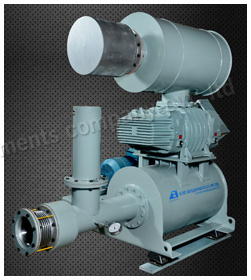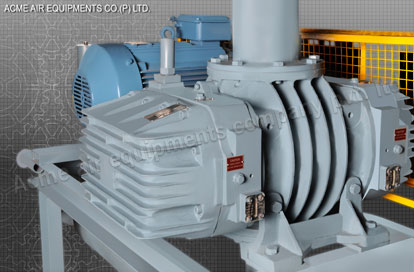Table of Contents
A twin lobe roots blower is positive displacement machinery with two rotors, which rotate inside a casing. One rotor is powered with external power resources and the other rotor is driven with gears.
These blowers are found everywhere that air or gas is needed. They are used for water aeration, pneumatic conveying of products and chemicals and for a variety of other industrial processes.
1. Efficiency
Efficiency is an important factor when choosing a Roots Blower for your application. A high-efficiency unit can save you money in the long run, and reduce your operating costs. In addition, energy efficiency can help you cut down on your carbon footprint.
Whether you’re looking for a Twin Lobe Roots Blower or Tri Lobe Roots Blower, you can trust Robuschi to provide the highest-quality products at competitive prices. These blowers are designed to work in any application, with superior performance and minimal maintenance.
The rotor of a Twin Lobe Roots Blower is made up of two lobes that rotate independently of each other. Each lobe can be driven by an external power source. This design allows the rotors to rotate at different speeds, so they can pump air efficiently.
Another major advantage of a Twin Lobe Roots Blower over other types of blowers is that it can maintain a constant flow rate, no matter what the conditions are. This makes it an excellent choice for sewage treatment plants, effluent treatment plants, and pneumatic conveying applications.
A Twin Lobe Roots Blower can also be a good choice for air conditioning, and HVAC systems. It can remove odors and dust from the air.
Because of its design, a Twin Lobe Roots Blower can operate at low temperatures, which can be beneficial for certain applications. However, this type of blower can have a hard time keeping up with the pressure changes that occur in an industrial environment.
In order to prevent this from happening, a Tri Lobe Roots Blower is available that features a unique rotor design. This design makes the rotors stiffer, so they can resist deflection at any load. It also increases volumetric efficiency and lowers operating temperatures.
These blowers are also designed to be sturdy and quiet, so they can be used in harsh environments. They are produced on state-of-the-art CNC machines from Haas (USA) and HMT (India), ensuring that they have a long service life. Lastly, they are available in a wide variety of sizes and capacities. They can be purchased as total package units, ready to install, or as bare blower units for replacement.

2. Noise
Twin Lobe Roots Blower and Tri Lobe Roots Blower both use positive displacement technology to deliver a specific volumetric flow of air. They have a number of advantages, including superior volumetric efficiency and low noise levels.
The main advantage of a positive-displacement blower is the ability to transport air or gas into a system at a controlled pressure level. This is achieved through the isochoric compression principle, also known as external compression. It works by forcing the medium through a resistance (such as a water column or distribution network), increasing the pressure and then delivering the required volumetric flow of air or gas.
Generally, a Twin Lobe Roots Blower has two figure eight shaped lobes that rotate in opposite directions and are synchronized by gear wheels to deliver consistent air displacement. These rotors are enclosed in an airtight case that seals off the lobes and prevents them from coming in contact with one another, which reduces the chance of vibration and noise.
When the airflow passes through the rotors, it is captured by the lobes and pushed back into the inlet of the blower. The lobes then rotate against the wall of the blower, exhausting air and gas to the outlet.
This design is very durable and can be found in many applications. However, it does have some drawbacks that you should keep in mind.
Because the lobes are so small, there is not much room for them to expand and contract, which can result in the rotors becoming damaged. This can lead to leaks and poor performance.
The lobes are also more sensitive to vibration, so they tend to deflect at varying speeds and loads, which can lead to the need for maintenance. This is why it is important to consider the amount of load that you are putting on the blower before making your final decision.
In order to avoid any potential damage, it is best to take care of any potential problems before they occur. This includes regular maintenance, checking oil levels and ensuring that any seals are in good condition. This can help to extend the life of your blower and ensure that it is operating properly.

3. Vibration
Twin Lobe Roots Blower and Tri Lobe Roots Blower are both positive displacement blowers that move raw materials like chips, plastic, fly ash, etc. They are a common type of blower in most manufacturing plants. These blowers are highly efficient and noisy.
PD blowers produce a lot of vibrations and can cause plant safety issues if not properly maintained. This is why eNoise Control works with plant safety personnel, facilities, and maintenance to help them reduce noise exposure from PD blowers.
The vibration level generated by a Twin Lobe Roots Blower and Tri-Lobe Roots Blower depends on a number of factors, including foundation design and installation method. If the foundation is not designed correctly or if the mounting method allows impacting bearing loads then vibration levels will be high.
As the impeller rotates, it produces an impacting load at each of its bearings and this produces a complex vibration pattern that excitees natural frequencies within each component of the blower. This complex vibration pattern is very difficult to measure.
In order to determine if there is a vibration issue with the blower, it needs to be properly inspected and evaluated. The blower should be tested on three different planes, horizontal, vertical, and axial under full load to determine the proper level of vibrations.
If the blower is able to meet the proper levels of vibration, then it will be considered good and will not require any further testing. However, if the vibration levels are not meeting the appropriate level then the blower will need to be reviewed and corrected by the factory.
A typical Twin Lobe Roots Blower will be able to produce vibration levels of less than 20g’s. It is important that the vibration level be measured in inches per second because rotary lobe blowers can have impacting bearing loads and can create very high levels of vibrations.
The blower will also need to be inspected for damage or signs of wear. This is because a rotor may have rubbing or cracking that can affect the performance of the blower. This is because of the tight tolerances that a rotor has to maintain and also the fact that the rotors will be rubbing against each other in order to move the air inside the cylinder. This can cause excessive vibration and can cause damage to the rotors as well as to the machine itself.
4. Energy
A Twin Lobe Roots Blower and Tri Lobe Roots Blower are air-cooled positive displacement blowers that feature two or three meshing rotors. Each rotor is powered by gear wheels that are synchronized. The blowers are designed with a fixed internal pressure ratio to maximize energy efficiency.
This type of blower is used in a wide range of applications, including food and pharmaceutical manufacturing, papermaking, chemical, and sewage treatment plants. It also has a low maintenance design and is often oil-free.
The rotors in a twin-lobe roots blower are made up of cycloidal profiles that alternate between hypocycloidal and epicycloid curves. The smaller generating circles in the rotor are one-quarter the diameter of the larger ones.
Since these rotors can only pump gas across a small pressure differential, it is important to maintain that clearance. If the gas is pumped across a larger pressure difference, the rotors can jam. This causes the compressor to lose its effectiveness and could damage the system.
A rotary-screw device, on the other hand, can compress gas across a much greater range of pressures. This allows it to achieve higher efficiencies and lower specific energy consumption than a lobe blower.
These blowers can achieve efficiency levels as high as 90% under certain conditions. Moreover, they offer many advantages such as low noise and vibration.
Another advantage of these blowers is that they are easy to operate and have a long lifespan. In addition, they can be maintained at a relatively low cost and are compatible with a variety of different pressures.
They are available in single stage configurations as well as in parallel arrangements and can be fitted with a range of power ratings, from a few kW to up to 250 kW. This makes them an excellent choice for any application.
In addition, they are available in various sizes and capacities. They are commonly used in a wide range of industrial sectors, including smelting and mining, food and beverage production, pharmaceutical manufacturing, and water treatment.
In order to determine the best type of blower for your system, it is essential to consider several factors. First of all, you must determine the flow rate that your system requires. In addition, you must evaluate the type of air that your system uses. Lastly, you should consider the costs of the equipment as well as the maintenance and repair costs.



